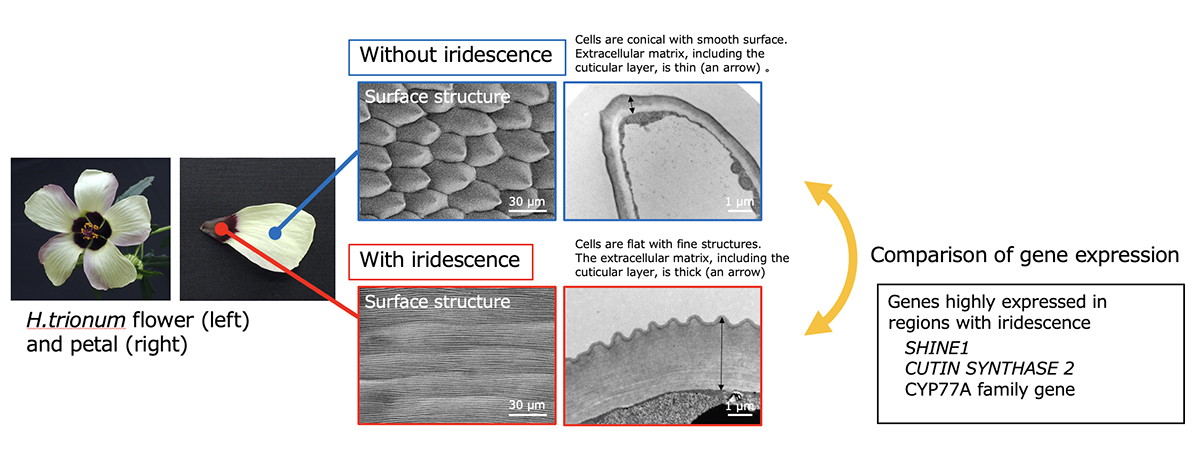Genome and transcriptome analyses reveal genes involved in the formation of fine ridges on petal epidermal cells in Hibiscus trionum
Arita Group / Biological Networks Laboratory
Genome and transcriptome analyses reveal genes involved in the formation of fine ridges on petal epidermal cells in Hibiscus trionum
Shizuka Koshimizu*, Sachiko Masuda, Arisa Shibata, Takayoshi Ishii, Ken Shirasu, Atsushi Hoshino, Masanori Arita
* Corresponding author
DNA Research 2023 Sep 11 DOI:10.1093/dnares/dsad019
Hibiscus trionum, commonly known as the ‘Flower of an Hour’, is an easily cultivated plant in the Malvaceae family, widespread in tropical and temperate regions, including drylands. The purple base part of its petal exhibits structural color due to the fine ridges on the epidermal cell surface, and the molecular mechanism of ridge formation has been actively investigated. We performed genome sequencing of H. trionum using a long-read sequencing technology with transcriptome and pathway analyses to identify candidate genes for fine structure formation. The ortholog of AtSHINE1, which is involved in the biosynthesis of cuticular wax in Arabidopsis thaliana, was significantly overexpressed in the iridescent tissue. In addition, orthologs of AtCUS2and AtCYP77A, which contribute to cutin synthesis, were also overexpressed. Our results provide important insights into the formation of fine ridges on epidermal cells in plants using H. trionum as a model.
This study was conducted by a collaborative research group comprising the National Institute of Genetics (Shizuka Koshimizu and Masanori Arita), RIKEN (Sachiko Masuda, Arisa Shibata, and Ken Shirasu), Arid Land Research Center, Tottori Univ. (Takayoshi Ishii), and National Institute for Basic Biology (Atsushi Hoshino).
This work was supported by JSPS KAKENHI grants to KS (20H05909), JST ACT-X grant to SK (JPMJAX21B6), a grant from Sapporo Bioscience Foundation to SK, and NIBB Collaborative Research Program to SK (20-341, 21-223, 22NIBB308, and 23NIBB314).
Reference
Moyroud, E., Wenzel, T., Middleton, R., et al. 2017, Disorder in convergent floral nanostructures enhances signalling to bees. Nature (2017) 550, 469–474.

Figure: H. trionum flower and comparison of the surface structures















